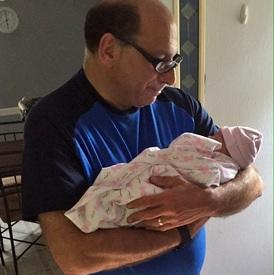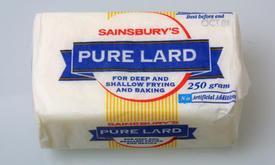Which Heart Rate Monitor do you wear and what device or software do you use it with?

mikeyrs
Posts: 176 Member
I need to wear an HRM to monitor that I stay below my maximum heart rate. I personally dislike chest strap HRMs because unless the chest strap is taught, it can be jarred loose. If the HRM strap is overly tight, it can also trigger a sudden Asthma attack. So, I currently wear a Scosche Rythm+ BLE / Ant+ strap on my right arm either on my forearm or bicep in line with my Garmin Vivoactive. If offers me the most comfort and data connectivity, and I've yet to have the signal drop.
What do you wear and recommend? Why is that product the best solution for you? Are you considering any alternative to measuring heart rate for calorie calculations or other performance data calculations? Recommendations welcome!
What do you wear and recommend? Why is that product the best solution for you? Are you considering any alternative to measuring heart rate for calorie calculations or other performance data calculations? Recommendations welcome!
0
Replies
-
I currently use an age-old Polar F11 monitor which includes the chest strap transmitter and water receiver.
It is old technology, but it is still working strong, has a lot of features (for its age) and it seems to me that it is very accurate and has some programability.
It's pre-bluetooth. Heck, I think it's even pre-wifi. The system it uses (audible beeps and crackles, like dial-up internet) is obsolete so there is no way I could possibly ever sync it with anything. I just use it for heart rate zone training.
I use RidewithGPS for my GPS tracking. I intend to get a Wahoo computer for monitoring my progress and for directions (I'm more interested in cycling for transport and for touring than for sport) and I intend on getting a bluetooth strap one day so I can connect it to my smartphone. I also want to get a cadence monitor because that's more important to me than anything while touring.0 -
I use a soft Garmin HR strap and a Garmin Edge 500. I don't have to worry about it being too tight or too lose as it goes under my sports bra which keeps it up.
I realize that doesn't apply to you at all. Sorry. Well, unless you want to start wearing a sports bra on rides.0 -
Which sports bra do you recommend? My wife wants to know!?! .... lol0
-
Bras are the secret, huh? I use the same soft strap Garmin and once the wind starts flapping my jersey against it, it goes bonkers. My max HR is around 174, and on windy days or long downhills I have seen the Garmin spike up to 220 (I wish!). Wetting it, washing it, rinsing it in distilled water, electrode gels, Static Guard spray, all these things I have tried but they only help for a while. I wrote Garmin and they sent me a whole new unit with a strap and it still sucks.
Sports Bra must keep it safe from the wind...tempting...but probably not 0
0 -
Use two different ones for different training....
Polar FT60 (allows custom settings for VO2 max and max HR).
Garmin Edge 800 trip computer linked to a soft strap.
Both chest straps though. Garmin strap is the more comfortable.
Polar is much better for calorie estimates (Garmin is hopeless for that). Polar less reliable for HR at times and seems to go through random spells of losing signal or working perfectly. Garmin has been 100% reliable for HR.
Purely for cycling and HR would recommend the Garmin, if you also want to use for gym training and calorie estimates then would go for the Polar
BTW
I only wear a sports bra at the weekend when Simon becomes Simone... Isn't that why cyclists shave their legs? 0
0 -
I use a Garmin Edge 510 with a couple of the old(er)-skool Garmin hard straps. These are the ones with the wide plastic strap in the center. They are bullet-proof, work great as long as you moisten the electrodes when you put 'em on, and the only time I've ever had problems with them moving is when I lost enough weight that I've had to readjust the strap length.
For software, I use Garmin Connect, Strava, Training Peaks, and Golden Cheetah. GC is my primary data repository and link point, as it pushes data out to both Strava and Training Peaks. I use Strava primarily for the social aspect and segments. Training Peaks is mostly just there to allow my coach easy access to my data. Golden Cheetah is my main analysis platform and local data repository.
That all sounds complicated but it's not really. When I finish a ride, my Garmin automatically uploads to Garmin Connect through my phone. Strava and Training Peaks both populate automatically from Garmin Connect, and Golden Cheetah has a one-click sync with Training Peaks, usually performed when I sit down to analyze data.
Yes, I'm both a geek and a data junky. 0
0 -
I've used Garmin and Suunto... both worked well and I'd recommend both.0
-
I started with a Polar FT7 and its standard Polar HRM, so it served as a standalone device. I then upgraded to the Polar H7 BLE when I began going to the gym and subsequently transitioned to a fitness APP (Digifit iCardio). Later, I tried the Garmin HRM sold with the standard Edge bundle. Now, I wear the Scosche Rythm+ on my arm because it's so much more convenient to put on anywhere compared to a chest strap and it's simultaneously compatible with my preferred cycling App, dedicated bike computers, and multiple Garmin devices of all kinds (including my Vivofit, Vivoactive, Edge, etc.). I truly believe I'm less prone to sudden Asthma attacks during high output activities without the strap around my chest.0
-
What are the Garmin soft strap ones like? I use the old full plastic one and it sometimes slides down especially at the beginning of a run. Looks pretty stupid trying to pull it up and tighten mid-run!0
-
Garmin Edge 500 with the pro strap. Comfy for miles and miles. Software is Garmin Connect which is linked to Strava and Training Peaks.0
-
Mostly I use the Garmin 800 head unit for recording my rides, On the Roadbike (or the 'cross bike in winter, when I mothball the flash carbon kit...) where I've got the powermeter fitted, I either use the MioLink optical wristband HR sensor or (if I've forgotten to charge the Mio / think I may be out for more than the 8 hour battery life will cover - say for a 2-3 day trip without charging facilities) then I use the Garmin premium strap (that's the one with the grey-tweedy kind of looking strap)
However, for rides on the Mountain Bike, or for the 'crosser if the power meter isn't fitted, then I'll use a Powercal HR/Pseudopowermeter belt.
Software, once again is the Garmin Express Downloader, which simply connects to the Edge 800 as soon as it's plugged in, downloads any files, and propagates to Strava, TrainingPeaks and MFP. I also once a week or so import my files to GoldenCheetah and Sportstracks (the PC based, rather than the web service version)
At the end of each month, I also "backup" my Garmin 800 to the PC - basically, a complete copy of the whole Garmin, but with month/year subdirectories within the "activities" folder. That way, if anything goes wrong on the Garmin when I add any of the firmware updates (admittedly, not a problem much now that Garmin have pretty much given up on the 800...) I can always "nuke it from orbit" and start again with all my settings/customisations in place.
0 -
Davide0910 wrote: »What are the Garmin soft strap ones like? I use the old full plastic one and it sometimes slides down especially at the beginning of a run. Looks pretty stupid trying to pull it up and tighten mid-run!
@Davide0910
I find it really comfortable and doesn't shift at all, much less intrusive than the Polar strap. Wore it for over eight hours yesterday and didn't even think about it.
But I only use it for cycling, I don't run unless being chased. 0
0 -
Davide0910 wrote: »What are the Garmin soft strap ones like? I use the old full plastic one and it sometimes slides down especially at the beginning of a run. Looks pretty stupid trying to pull it up and tighten mid-run!
It's pretty comfortable... no problems with it staying in place when running or biking, though it does slide down a bit when I jump (basketball or more aggressive trail running). Not really a big deal for me, though... I'd rather have wider lats and deal with the sliding.0 -
Just went back to hard strap, cycleops, from bontrager soft strap. The soft strap work well for the first year but then started having problems like spikes, drops, and the ever annoying refuse to pickup at start (sometimes lasting over ten minutes). Tried everything except for changing straps and nothing worked. Went back to hard strap because my old Kurt Kinetics and Polar was indestructible (brought new because they are on private channels).
I use GC for store and analysis and upload to Strava (social) and Endomondo. Endo synchronize to MFP. I use IpBike to capture ride stats and recently started tracking my walk stats replacing Endo (but probably continue to use Endo for synch). For calorie count I use IpBike's VP but just ordered a Stages. Walk will continue to be derived from VP.0 -
I'm using a Mio Link for the HRM and a Garmin 510 for my bike computer. I had a Mio Alpha 2 but I gave it away when I got my Garmin 910x for hiking and XC skiing. I've compared the Mio HR monitor to my Wahoo fitness and Polar H7 chest straps and it was as accurate but didn't need the sweat to make contact so it's almost instant on and it reads in heat, cold, dry or wet. I like it a lot!0
-
Garmin 910XT, with Garmin Connect to down load. Usually really good...sometimes the HR sensor goes a little nuts.0
-
I use the HR strap that goes with my Blackburn bike computer. It occasionally picks up stray signals from the environment I ride in. It also picks up my husbands HR signal when we ride close together. I'm upgrading to a bluetooth strap to use with my phone. I use electrode gel and it works very well.0
-
Polar F6. No issues with strap.0
-
Fitbit charge HR and I love it.0
-
Garmin hard strap with Endomondo for mtb'ing.0
-
Speaking only about calorie burns, what is the most accurate method to obtain this data? Power meter or HRM strap?
Maymyride does well enough at giving me the distance and avg speed which aside from the cal burn, is about all I am looking for. Thanks0 -
Power meter, in my opinion. HRM is almost complete guesswork. Everyone has an algorithm and they are all different. There's a little bit of that with power too, but the power meter is directly measuring the work done. The only real area for wiggle room after that should be the calculations for the body's conversion efficiency. Most literature, IIRC, says human body is somewhere between 20 and something like 27% efficient at converting fuel to energy. if you assume 25%, a measured kilojoule from the power meter more-or-less equals a calorie burned. So, there's some room for error there but nowhere near as much as with a HRM. A given ride with an HRM can see differences measured in the 100s of calories plus or minus. You should see nothing close to that with a power meter.0
-
Yup PM and once you have one, you can ditch the HRM. (Training with power is amazing! No more guesswork or subjectivity.) PM is direct measurement of work while heart rate is the number of beats the heart makes per unit of time. Only under a narrow and ideal condition does HR match up reasonably well with the work being produced.
FYI - top athletes are in the 25% efficiency range with a few measured in the 27%. Lab testing is need to pin it down; cost is not trivial and my alma mater charges $230. I leave it set at 25% on my bike computer since the error from my intake estimate is far worse.0 -
And I suppose the PM are way more expensive, aren't they? Any recommendations for something on the less expensive side of the scale?0
-
Power meters are far more expensive than heart rate monitors. The good news is that we are in the early stages of what's generally predicted to be a massive price drop (think flat panel TVs from 10 years ago to now) due to more competition flooding the market. The bad news is the "less expensive side" at this moment in time is still in the $500 and up range. The whole power meter discussion is massive, involved, and sometimes complicated. My recommendation is to read DC Rainmaker's Power Meter Buyer's Guide post. It'll do a far more comprehensive job of walking you through the options than I can.And I suppose the PM are way more expensive, aren't they? Any recommendations for something on the less expensive side of the scale?
Couldn't agree more, except that I think having a HRM in addition to the power meter can give you some extra insight as to what's happening with your body and/or fitness. I don't use it during training anymore but it can often provide context for the power data that's useful when you're analyzing data afterwards.Yup PM and once you have one, you can ditch the HRM. (Training with power is amazing! No more guesswork or subjectivity.) PM is direct measurement of work while heart rate is the number of beats the heart makes per unit of time. Only under a narrow and ideal condition does HR match up reasonably well with the work being produced.
One last point to make: a power meter is a much more involved training tool than a HRM. There's more to it, there's a steeper learning curve, and it provides the most benefit when the data is analyzed on fairly regular basis. They are fantastic tools but if all you're trying to do is have fun riding your bike and lose some weight it is, in my opinion, a pretty massive overkill. I don't believe power meters actually make sense (at least at current and near-term prices) for cyclists unless you're interested in and committed to getting faster. In my mind that means either committing the time and effort to learning how to train with and analyze power data or committing the time and money to hiring a coach who can do it for you (or with you). It's a pretty deep rabbit hole to go down just for better calorie estimation data.
0 -
Power meters are far more expensive than heart rate monitors. The good news is that we are in the early stages of what's generally predicted to be a massive price drop (think flat panel TVs from 10 years ago to now) due to more competition flooding the market. The bad news is the "less expensive side" at this moment in time is still in the $500 and up range. The whole power meter discussion is massive, involved, and sometimes complicated. My recommendation is to read DC Rainmaker's Power Meter Buyer's Guide post. It'll do a far more comprehensive job of walking you through the options than I can.And I suppose the PM are way more expensive, aren't they? Any recommendations for something on the less expensive side of the scale?
Couldn't agree more, except that I think having a HRM in addition to the power meter can give you some extra insight as to what's happening with your body and/or fitness. I don't use it during training anymore but it can often provide context for the power data that's useful when you're analyzing data afterwards.Yup PM and once you have one, you can ditch the HRM. (Training with power is amazing! No more guesswork or subjectivity.) PM is direct measurement of work while heart rate is the number of beats the heart makes per unit of time. Only under a narrow and ideal condition does HR match up reasonably well with the work being produced.
One last point to make: a power meter is a much more involved training tool than a HRM. There's more to it, there's a steeper learning curve, and it provides the most benefit when the data is analyzed on fairly regular basis. They are fantastic tools but if all you're trying to do is have fun riding your bike and lose some weight it is, in my opinion, a pretty massive overkill. I don't believe power meters actually make sense (at least at current and near-term prices) for cyclists unless you're interested in and committed to getting faster. In my mind that means either committing the time and effort to learning how to train with and analyze power data or committing the time and money to hiring a coach who can do it for you (or with you). It's a pretty deep rabbit hole to go down just for better calorie estimation data.
What he said 100%. Without the commitment to training and analysis, a power meter is just expensive bike jewellery.
0 -
Power meters are far more expensive than heart rate monitors. The good news is that we are in the early stages of what's generally predicted to be a massive price drop (think flat panel TVs from 10 years ago to now) due to more competition flooding the market. The bad news is the "less expensive side" at this moment in time is still in the $500 and up range. The whole power meter discussion is massive, involved, and sometimes complicated. My recommendation is to read DC Rainmaker's Power Meter Buyer's Guide post. It'll do a far more comprehensive job of walking you through the options than I can.And I suppose the PM are way more expensive, aren't they? Any recommendations for something on the less expensive side of the scale?
Couldn't agree more, except that I think having a HRM in addition to the power meter can give you some extra insight as to what's happening with your body and/or fitness. I don't use it during training anymore but it can often provide context for the power data that's useful when you're analyzing data afterwards.Yup PM and once you have one, you can ditch the HRM. (Training with power is amazing! No more guesswork or subjectivity.) PM is direct measurement of work while heart rate is the number of beats the heart makes per unit of time. Only under a narrow and ideal condition does HR match up reasonably well with the work being produced.
One last point to make: a power meter is a much more involved training tool than a HRM. There's more to it, there's a steeper learning curve, and it provides the most benefit when the data is analyzed on fairly regular basis. They are fantastic tools but if all you're trying to do is have fun riding your bike and lose some weight it is, in my opinion, a pretty massive overkill. I don't believe power meters actually make sense (at least at current and near-term prices) for cyclists unless you're interested in and committed to getting faster. In my mind that means either committing the time and effort to learning how to train with and analyze power data or committing the time and money to hiring a coach who can do it for you (or with you). It's a pretty deep rabbit hole to go down just for better calorie estimation data.
What he said 100%. Without the commitment to training and analysis, a power meter is just expensive bike jewellery.
Can't agree more. Investing in a HRM is essential but a Power Meter is useless if you don't know how to and take the time to analyze the data. I hired a coach. I'm not trying to become pro but I wanted someone who understood more than I do about how to get more fit and how to do better on the bike without hurting myself. I can't imagine riding without a power meter now but it was a bit confusing at first. You need to know power thresholds and training zones and have a program that will allow you to look at the data both in segments and as a whole. It needs to give you the option to look at trends as well. No data on it's own is worth a plugged nickel. Trends are everything when it comes to training. Now I can look at the power, HR, speed and cadence when I'm riding and know that my body is not going to tolerate the training today or that it will allow me to push harder than I usually would. Power is much more responsive to changes in effort. You can tell in a second if you are putting too much power out for your current needs (starting a race too fast because of excitement) or pushing too hard up a hill when you should be lying back since you still have 80 miles to go. A HR monitor are slower to respond but still tells you a world of information. You can train without a power meter and do great. You can't train without a heart monitor.0 -
TBH all I really want is accurate calorie burn data so I fine tune my intake and maximize fat loss. I'd like to lose about 40 more lbs (which at my current rate will take another 4+ months) then start adding muscle via weight lifting and calorie surplus. So I guess HRM is the way to go but the variance in obtaining truly accurate data concerns me.
I appreciate everyone taking the time to discuss this.0 -
TBH all I really want is accurate calorie burn data so I fine tune my intake and maximize fat loss. I'd like to lose about 40 more lbs (which at my current rate will take another 4+ months) then start adding muscle via weight lifting and calorie surplus. So I guess HRM is the way to go but the variance in obtaining truly accurate data concerns me.
I appreciate everyone taking the time to discuss this.
Honestly, you're probably looking to deeply into this. I say that from experience because, data geek that I am, it's hard to reconcile myself to data I know is suspect. What it really comes down to is that almost everything in the realm of weight loss is estimations and, in some cases, guesswork. There's a ton of error built into your logging as it is. Food labels incorrect, weight variations, guessing at meals or foods that we don't have/can't get good calorie data for, etc. Questionable calorie burns from your HRM is just one more added to the pile. My advice is to try not to sweat it too much. Find an intake and exercise level that works for you and go. And that's as much about experience and experimentation as anything else. Personally, I don't "eat back" exercise calories. I try to stick to my calorie goal and consider any exercise calorie burn as a bonus. The only concession I make is on days where I'm working on threshold (essentially, building muscle) or days around exceptionally hard or long rides or races, I try to eat more protein or carbs as appropriate, and may allow myself some extra.
Good luck!
0 -
I kinda gave up on my HRM for a while as it is lately just so subject to annoying spikes and fake info due to wind/static and such on outside rides. I tried everything to mitigate it but I can't eliminate the issues. Inside it is rock solid so I plan to use it when on the trainer, once the weather gets bad.
While I used it I thought the info valuable. Also, Garmin connect gave me greatly reduced calorie counts when I included HRM data on rides; I think these are much more in line with reality than what I was seeing on Strava, for example, or GC without the HRM data set.
I will say this though: I feel a little better pushing myself without knowing what my HRM value is sometimes. When I had the monitor on, I could see when I was near or at my max heart rate and I think that sometimes sapped my will a bit to push hard on climbs. The suffering seemed a little more intense in my head? I think I climb better without knowing that my heart is doing all it can or not. I suspect the same kind of psych trap might happen a power meter too. If you know what your thresholds are, and you see immediate data showing you are exceeding that, you might feel the pain a little more or more quickly decide to back off. While better awareness is usually a good thing, maybe it is better to just focus on the work and approach your limits by your subjective perceived effort. At least that is what I have noticed for myself. Fitness gains are generally made by pushing boundaries.0
This discussion has been closed.
















